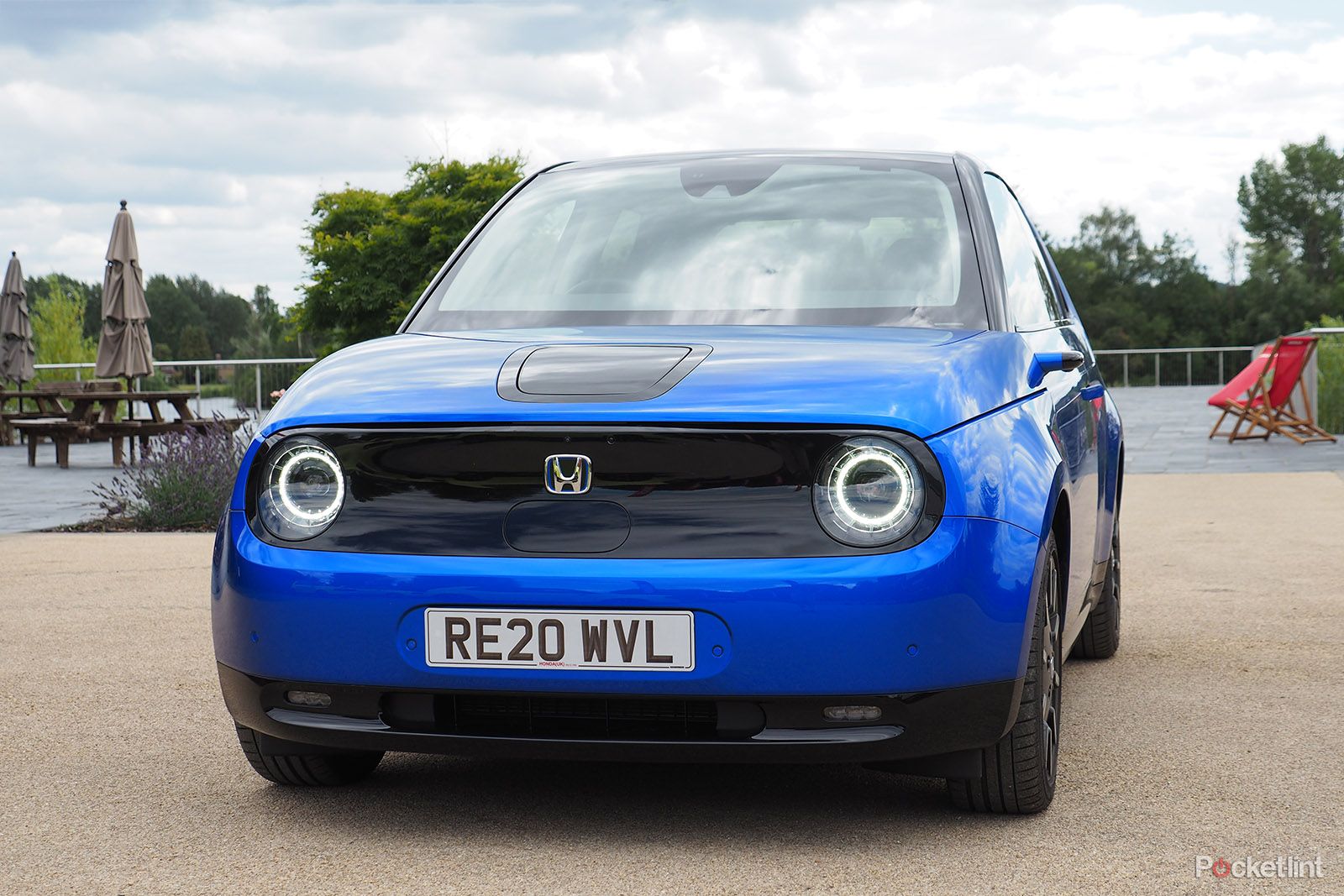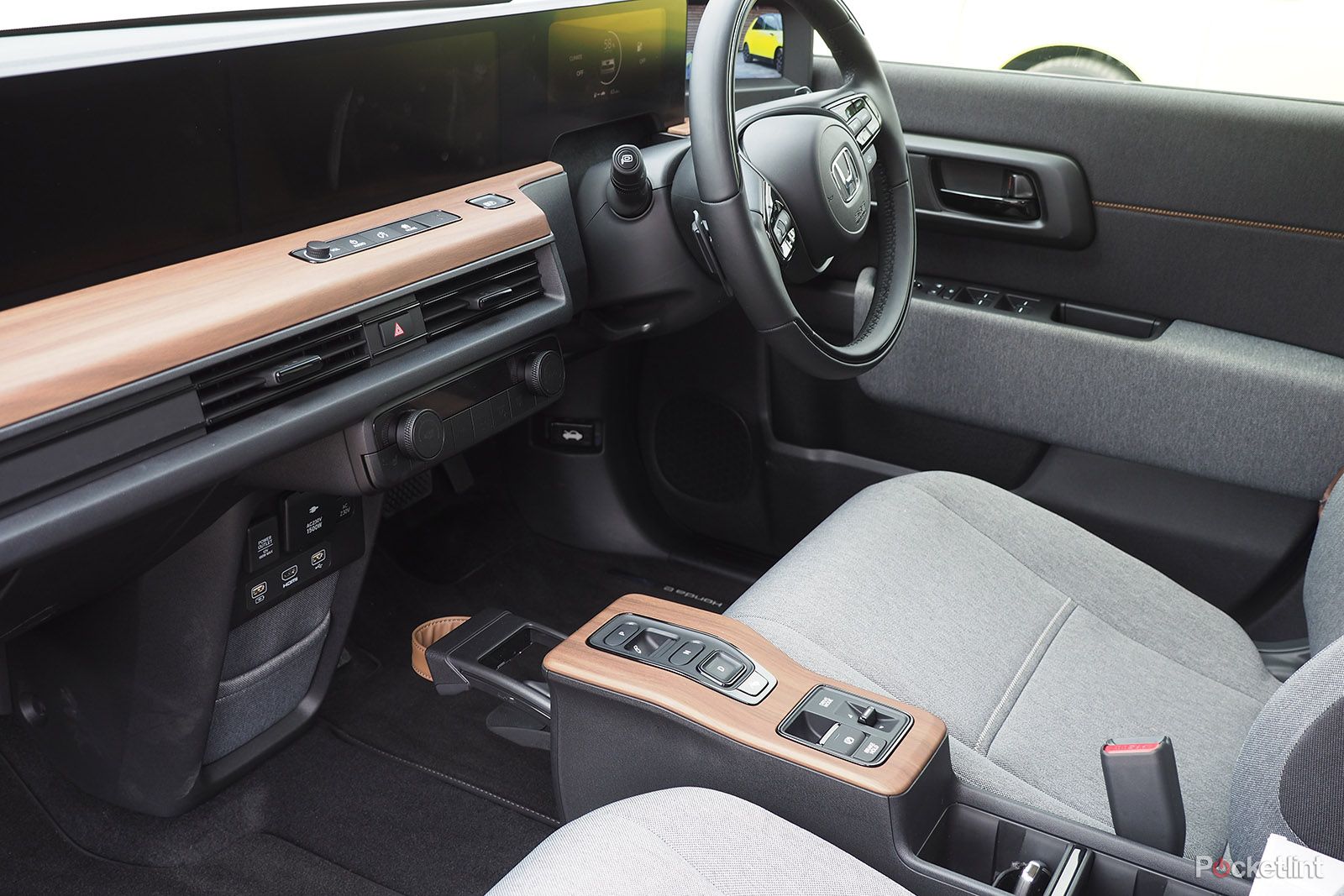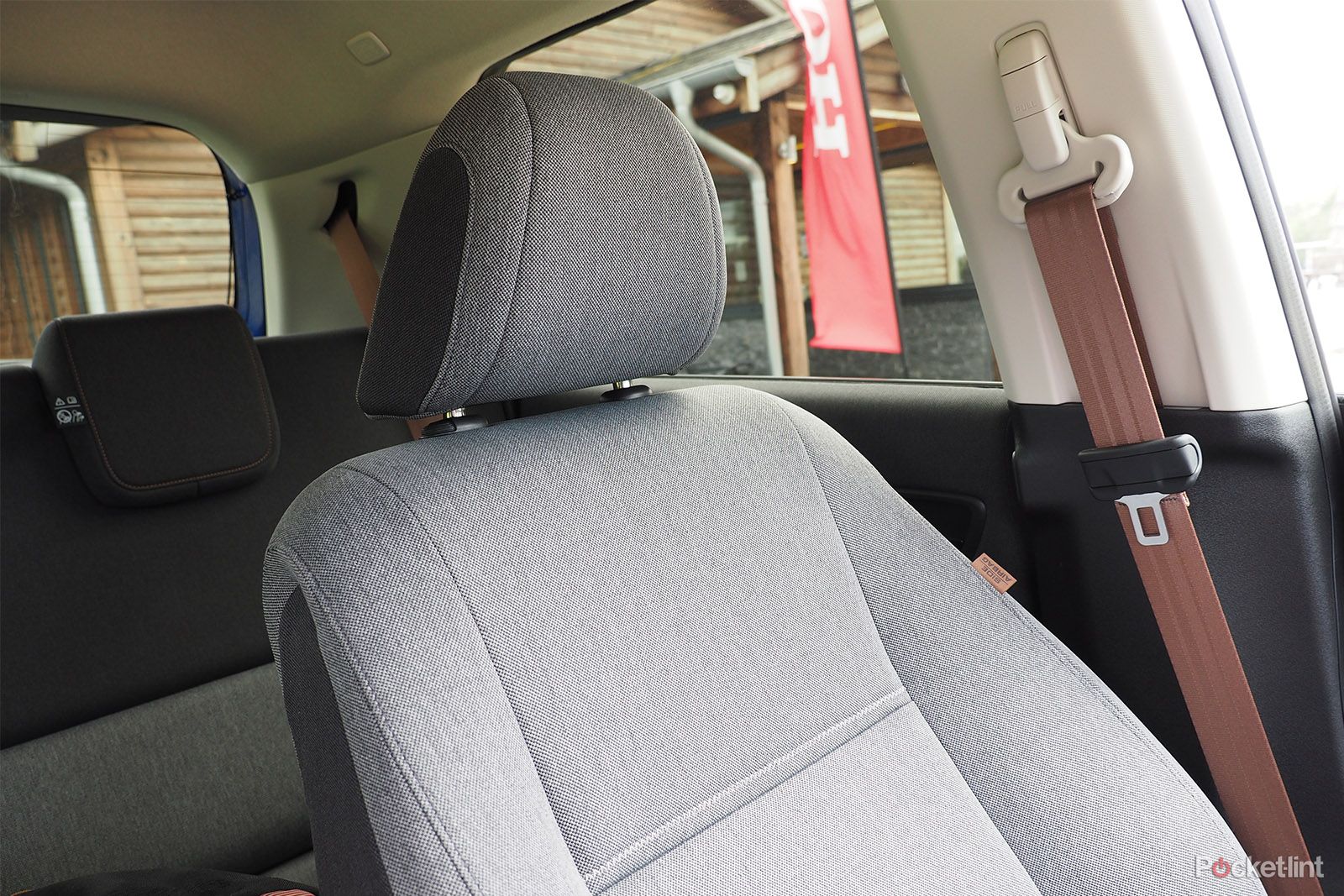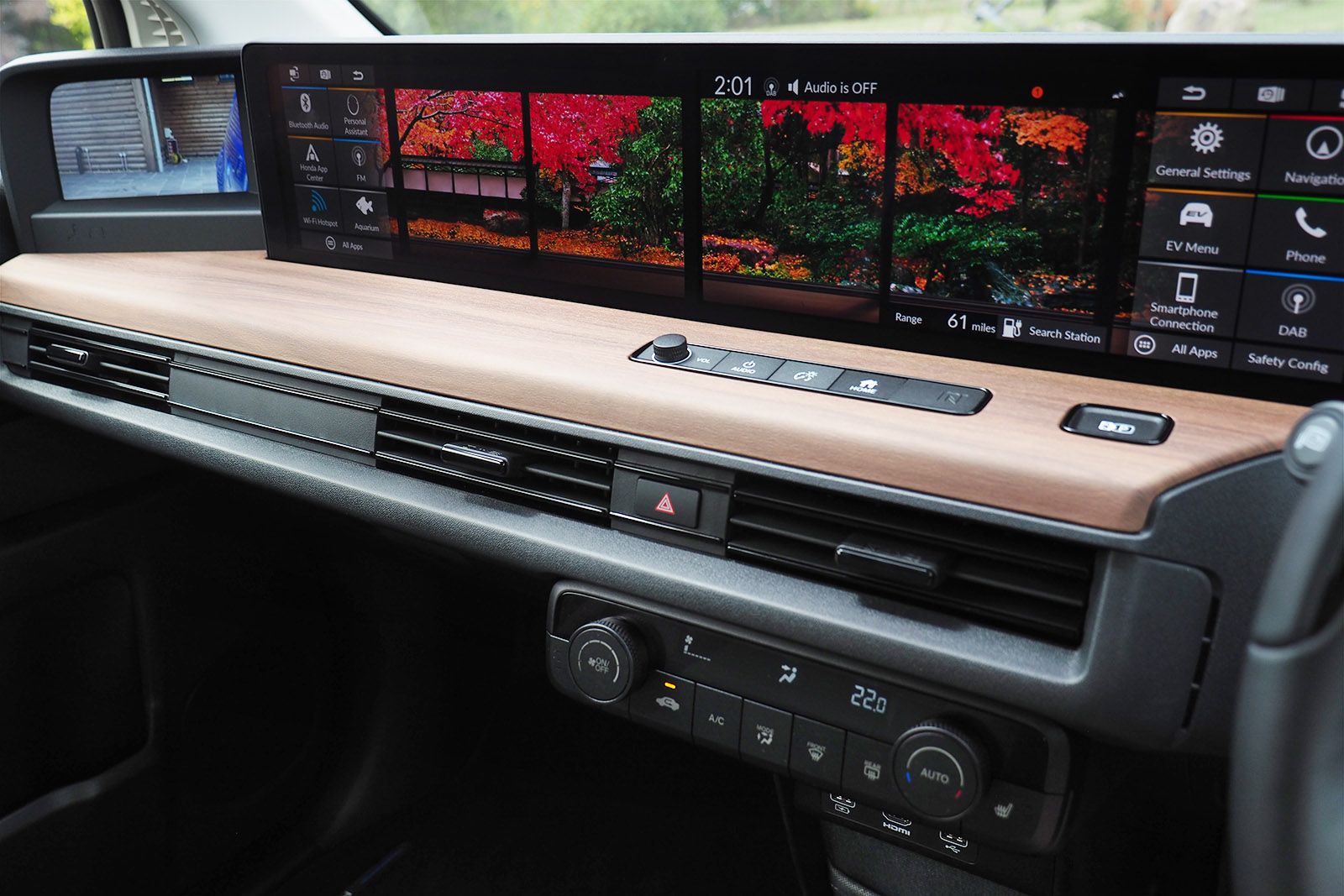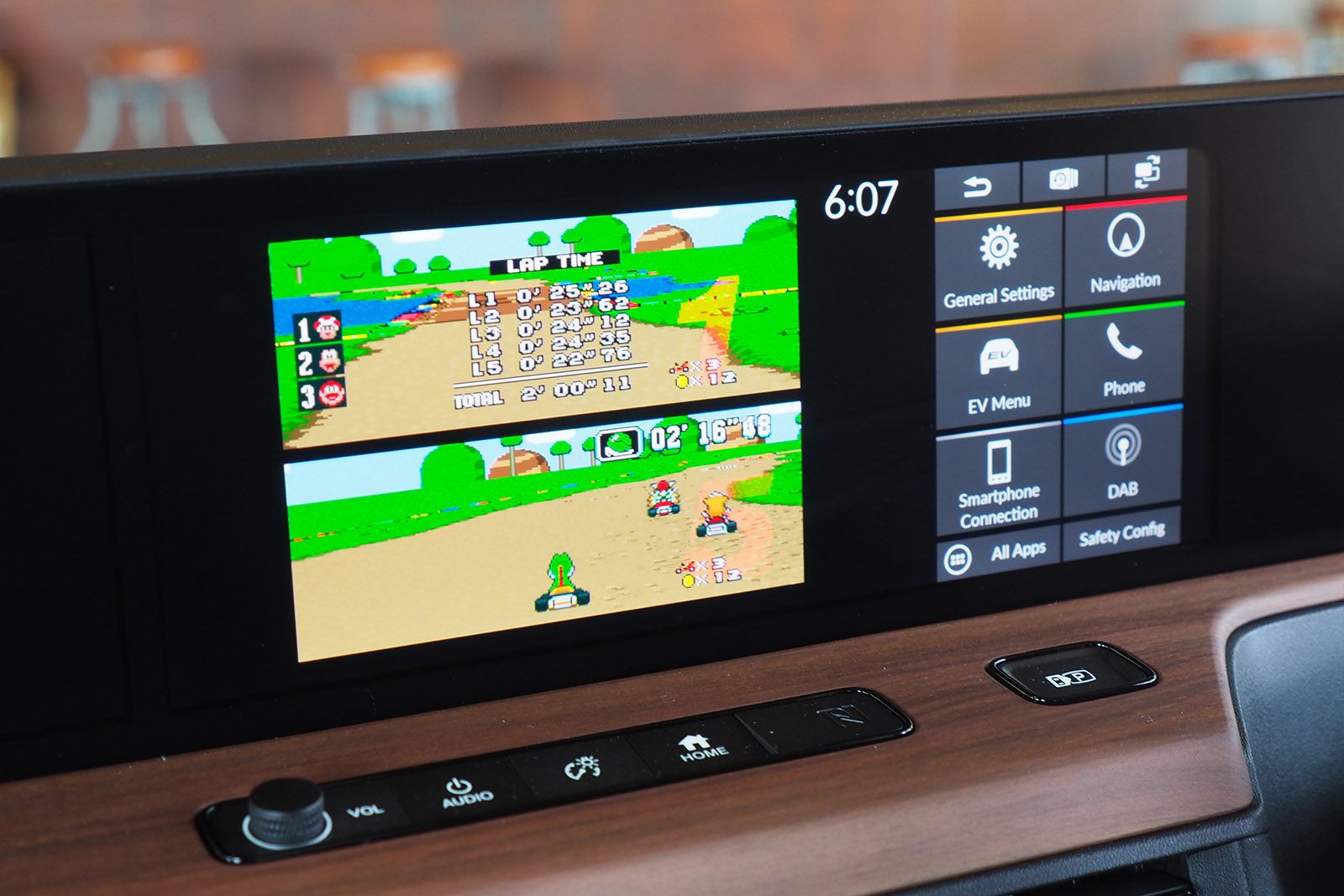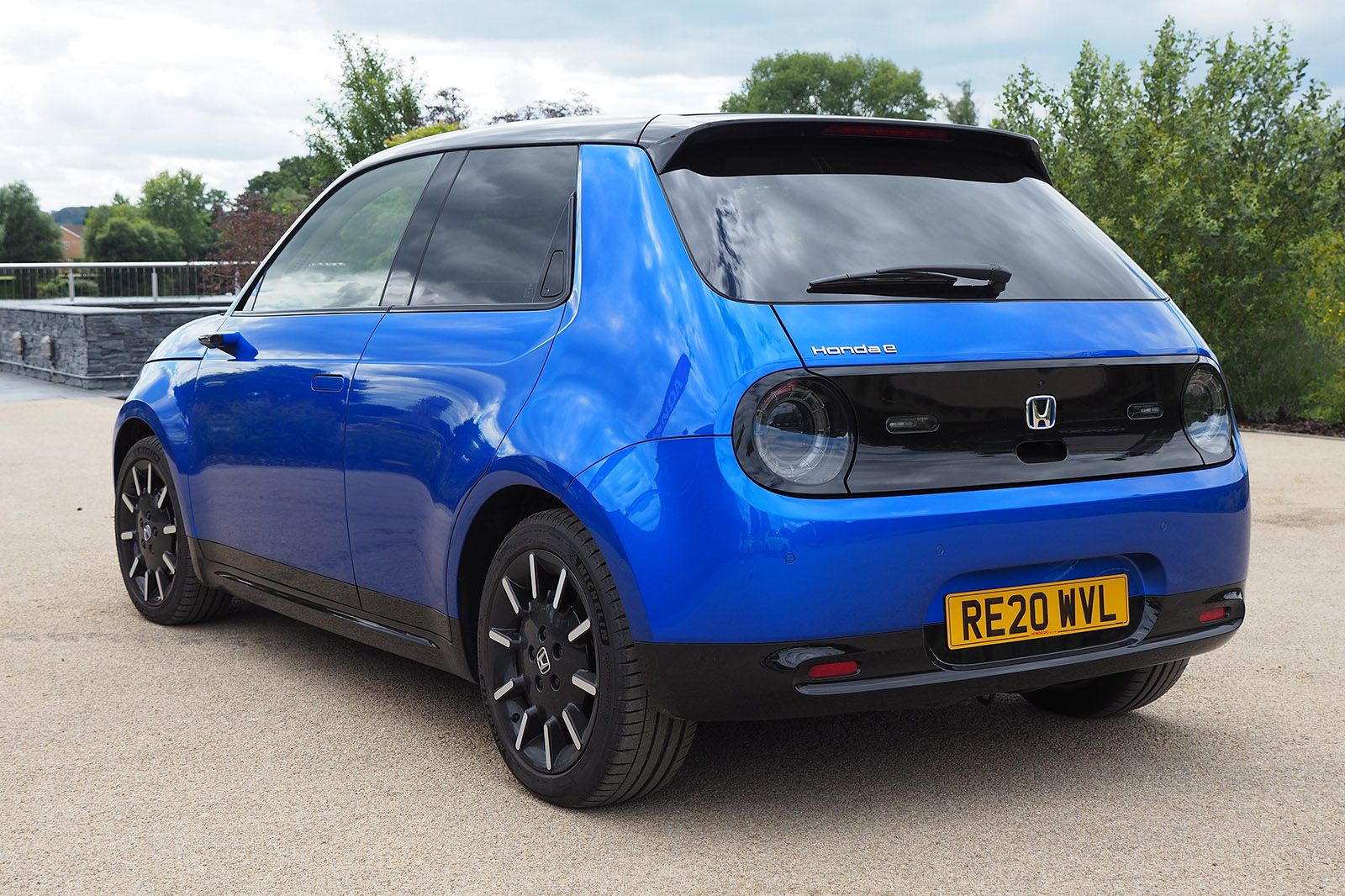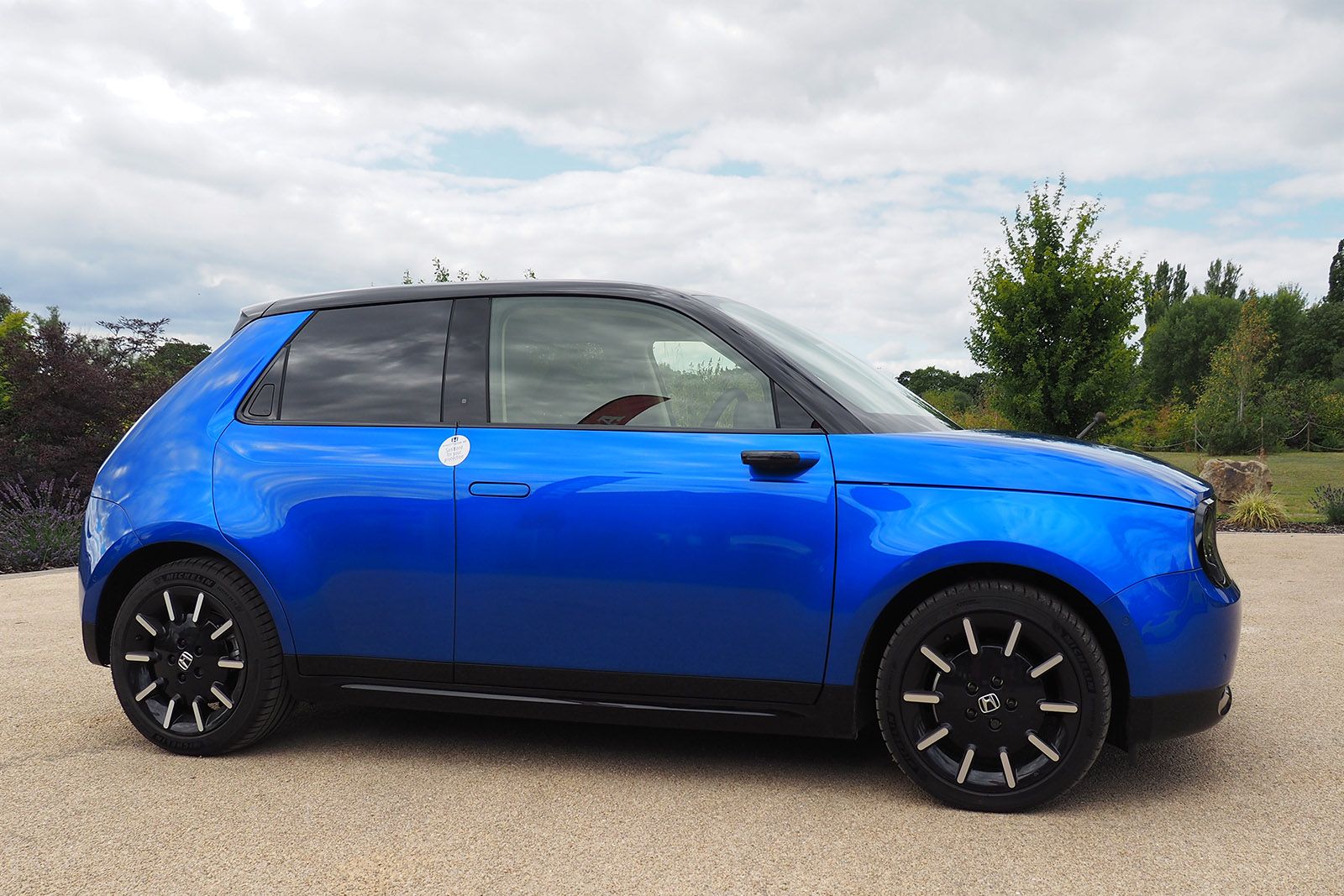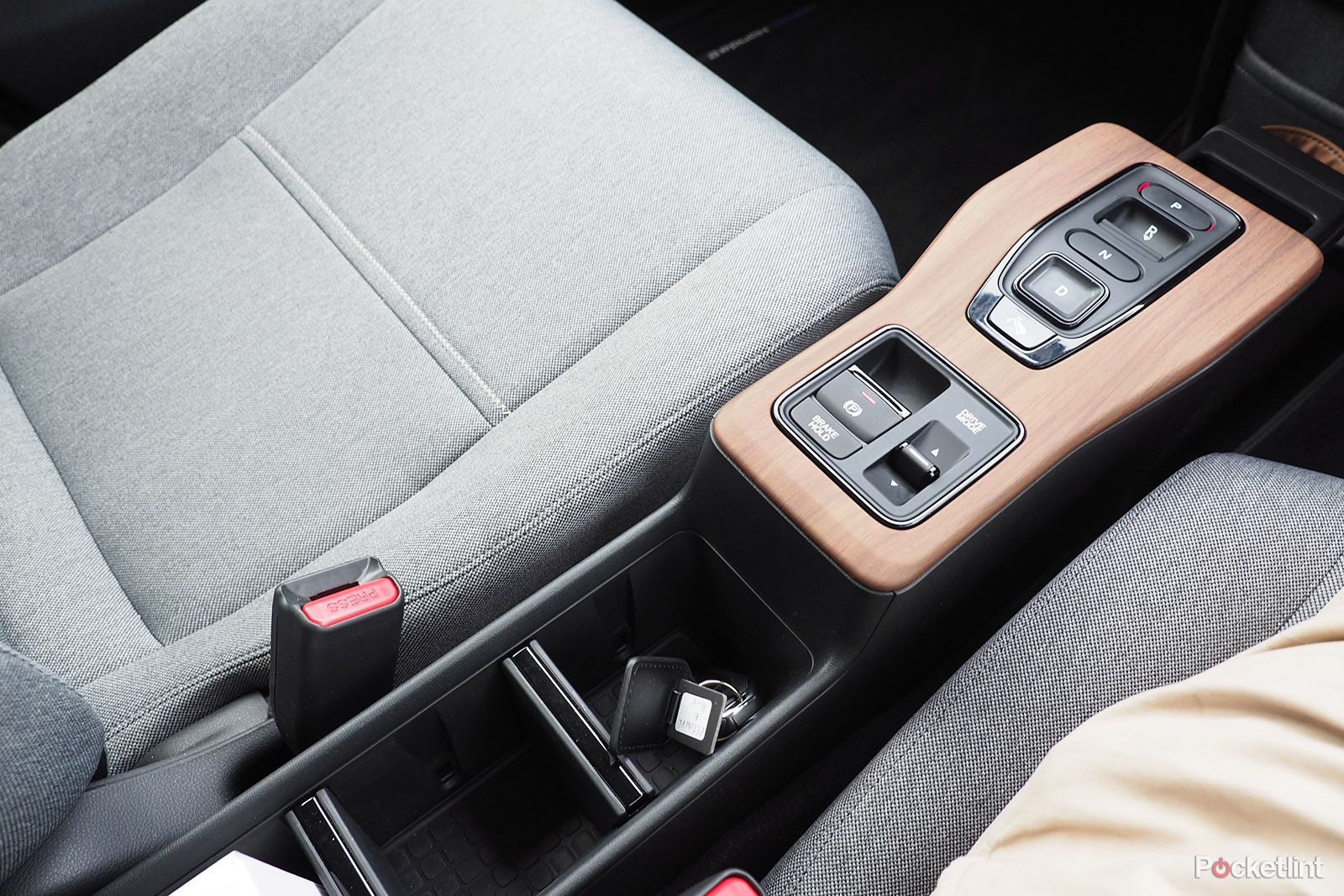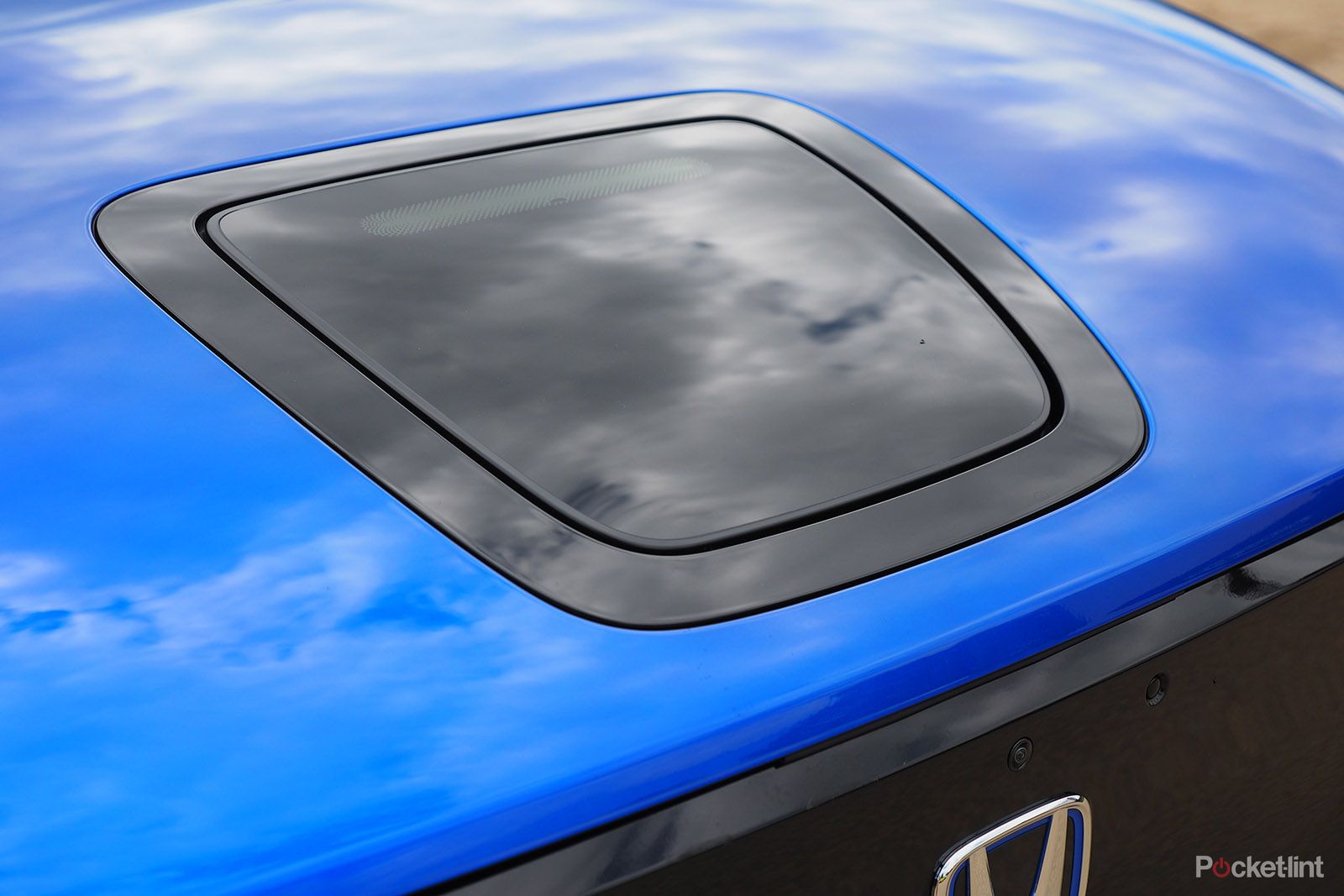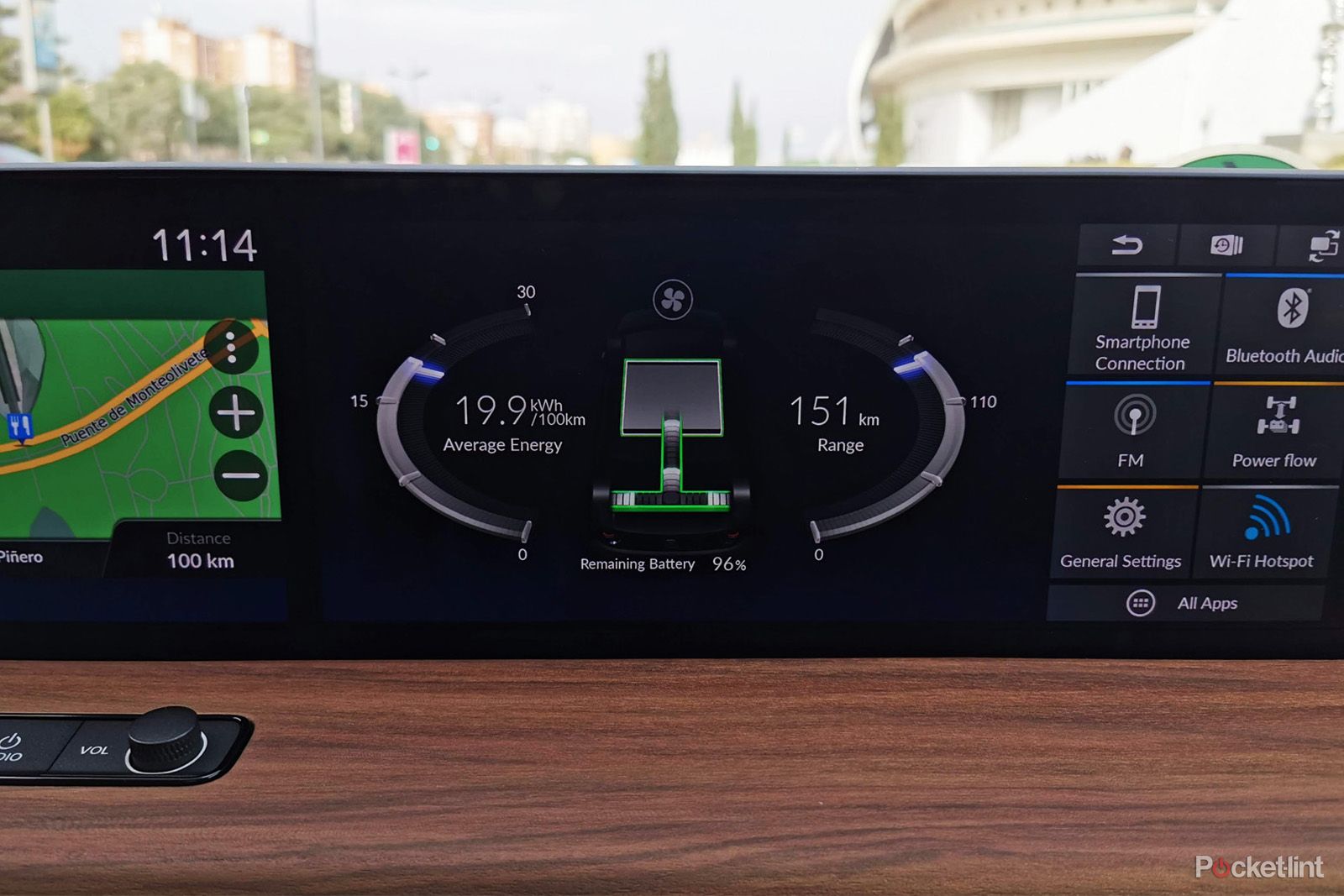The Honda e is a statement. It would have been easy for Honda to take an existing model, stuff in a battery and then try to sell it to you, as a number of other manufacturers have done.
But with the Honda e, there's a real sense of rebirth for Honda, a sense of excitement - as this cute little urban EV races out of the gates, looking to shake-up the more affordable end of the electric car market.
And excite it does: make no mistake, there's a whole lot happening around the Honda e that deserves your attention. We've now driven it on UK roads, too, further adding to our understanding of why this is such a hugely appealing all-electric car.
Our quick take
It's easy to say that the Honda e is one of the most adorable little cars we've driven for some time. It has character, it has personality, and it really is a lot of fun to drive.
It's also a car that's loaded with tech, taking a refreshing approach in the interior and giving you options that you simply don't get in other cars, including those that would cost twice the price. Compared to close rivals, the Honda e feels different - and that goes a long way in small cars.
But so much of what the Honda e achieves it does so because the battery is small - it keeps the price down, it keeps it light and compact and the charging time short, but that also means that the range isn't going to suit all people.
Ultimately buying an electric car should be about what you need it to do. This isn't a car that's designed for hammering up and down the motorways, it's for those people who know that most of their driving is short distances. If that's you, then there's nothing else on the roads with this kind of personality.
The Honda e is, quite literally, a breath of fresh air.

Honda e - 5.0 / 5
| FOR | AGAINST |
|---|---|
|
|
Design that's different
Designed from the ground up as an electric car, Honda skipped the traditional exciting-concept-boring-production-car route. Instead it created the car it wanted to create. Having sat around the table with the designers of this car, there's a real sense that they were allowed to do what they wanted with it.
That's hugely important, because it means that the Honda e doesn't feel like it's been popped out of a mould. It's fresh and interesting, littered with little details that give it personality. And many of these elements are standard, with two models - Normal or Advance - and five paint colours.
There isn't a huge range of options, but we like that simplified approach, as almost everything is standard. That also keeps the price in check, at £26,160 for the Normal model, or £28,660 for the Advance - working out to about £299 or £349 per month respectively in the UK market.
From the outside, there will be the choice of 16 or 17-inch wheels (choose the smaller ones as they offer longer range), but things like the wing mirror cameras and hidden/pop-out door handles are all standard. The Advance looks the same, but adds Honda Parking Pilot, heated seats and a heated steering wheel, as well as a more powerful motor.
With a happy looking face - fronted by those round headlight eyes - the charging port has prominence on the bonnet, highlighted rather than hidden.
The electric architecture means the interior is surprisingly roomy, it's really wide-open on the inside. About the only compromise being the boot, which is pretty small. The motor sits in the floor of the boot, so you'll struggle to get much more than a couple of weekend bags in the available 171 litres of space. There's also no split rear seat, although you could fold the whole thing for 571 litres of space instead.
The Honda e looks like nothing else on the road - and that's important for standing out from the crowd and turning heads in a way that few cars do. It's distinctive, it's good-looking, it's fun - imparting its personality both from the outside, but increasingly through the interior and everything that it offers.
A lounge-style interior
Every concept car now comes with an interior that looks more like your front room than a vehicle. Few cars carry that through to production, the BMW i3 and the Citroen C4 Cactus perhaps being notable exceptions. The Honda e joins those cars offering an interior that's unique.
There's a natural and relaxed feel to proceedings, with fabrics more like your sofa and a dashboard that fuses the high tech - an expanse of five displays - with the traditional wooden dash look. There's a techy-retro feel to things, which is a huge release from the majority of cars which would have presented an expanse of black plastic instead.
The seats are comfortable, nicely sculpted in the front to stop you rolling on those corners, while the backseat is more of a bench. There's not huge legroom in the rear, but in this size of car you don't expect to get that. There's plenty of headroom though, with the advantage of a digital rear view mirror, so if there is a big head in the back, you'll still have a clear view out of the back (although we prefer the traditional view, which can be activated by a quick pull on a lever below the mirror). There are other details, like the small leather loop you can pull to deploy a cup holder - that helps build the distinctiveness.
Yes, there's plenty of plastic in the interior, but you don't notice it, because there's so much personality elsewhere. The focal point will naturally be the displays, with digital wing mirrors on each end, an 8.8-inch driver display, and then two 12.3-inch displays side-by-side. From a design point of view, it sort of creates a digital divide around the front of the car, avoiding the visual barrier that the dash can sometimes become.
That's also one other thing to bear in mind: the Honda e only seats four, so that's two in the back rather than three. Bigger families need not apply. But if it's just rear bench space for your bags then, well, no biggie.
Honda e interior tech
Talking of digital mirrors, they are just the obvious tip of the tech iceberg. We'd expected something of a learning curve, but actually, using the digital wing mirrors is little different to conventional glass mirrors. But because they are digital they can offer more tricks, like coloured lines when you indicate so you can see if you have space to squeeze into that gap. It's great at-a-glance stuff and they also do a good job of reducing the blind spot. Having used these on UK roads we can safely say they're the best implementation we've seen in any car to date.
Most people will be drawn to the displays, however. The layout really puts one screen in the centre of the car close to the driver, the second closer to the passenger. Some functions are limited to the driver side, because you don't want to find you can't get to what you want as it's on the other side of the car. That's welcomed, because if we had one criticism of the design, it's that the C pillar (where the side meets the back) is a little thick - glance into the blindspot on the nearside and you can't really see anything. Fortunately, the digital mirrors make up for it.
There's an on-screen button to switch the screens over, and one to fan out a display of recent apps you've used so it's easy to get to what you want. Big buttons flank either end, the driver naturally getting things like navigation close at hand, while the passenger gets closer access to entertainment - the idea being that the passenger can control the music without having to disrupt the navigation view. Porsche is doing something similar on the Taycan, as it happens, but on the Honda e it is standard.
Where this gets really clever is letting you connect your phone and use Android Auto or Apple CarPlay and have this running in one display, while maintaining the car's own systems in another. You can be using Honda's satnav, for example, while you have Spotify open on the second display.
This sort of integration is a refreshing change from many cars that will limit you to one system or the other, requiring a return to the home screen before moving to another app. Honda has given you the space to basically do it all and it's a really flexible system that's easy to use.
The great thing about the design is that there's a surface to rest your hand or arm on when using the touchscreen displays, so you avoid the sort of bumpy-road mishits that you get in a Range Rover or Audi. Yes, the Honda e makes it easier to use its techy system than some of these premium marques. The only thing that's better in our opinion is the Polestar 2's integrated Google setup.
Sure, Honda's own satnav isn't the best - we'd still choose Waze over it - and we can't help thinking that with so much display, Honda could have reduced the on-screen clutter around the navigation display to make the map part bigger. We missed a few turns because the voice was just a little late and the map didn't give us the best of views (driving down the M25 wasn't a bother - and this electric car isn't short on speed - but it wasn't part of the plan!).
Talking of flexibility, Honda doesn't want to limit what you can do and the inclusion of not only USB ports, but a conventional wall socket(!) and an HDMI point at something bigger. We connected a Chromecast to the car via that HDMI, meaning we could then watch content from YouTube or Netflix on the display. Yes, you could charge your laptop from the plug socket - the range of possibilities is refreshingly welcome. We even snuck in a few games of Mario Kart with a SNES Classic Mini plugged in - and we're not even kidding. You're sitting on a big battery and a decent display, so this at least gives you access to those elements.
Honda also has a voice control system. This is always listening for the "Ok Honda" wake and will give you things like navigation help or information such as the weather. It works surprisingly well, another little leaning towards the future.
Driving, handling and performance
But you're buying a car, not an entertainment system, so you'll want to know how this small car drives. Fortunately, it's a blast. We have driven the Advance model, which has a slightly more powerful motor and some additional functions, like the automatic parking feature (which works really well), but it does cost a little more.
The Honda e places the battery in the floor for a low centre of gravity, while the motor sits between the rear wheels. The rear wheel drive allows more freedom for the front wheels and the turning circle on this car is incredibly tight, meaning it's going to be great for moving around urban streets. The turning radius is just 4.3 metres, it's almost comical.
It's a perfect car for those multi-story car parks where everything is just too small and turning into a tight space is a breeze. With the standard motor delivering 136PS and the Advance delivering 154PS, along with 315Nm torque, the Honda e can leap off the line as electric cars are designed to do.
There's a go-kart feeling to things and we can easily liken this to the how a Mini drives - a natural rival to the Mini Electric - although it's not the fastest EV out there, taking about 9 seconds to hit 62mph. Still, it feels fast and responsive - a feeling heightened should you engage the sports mode.
Yes, this Honda is never going to challenge the Tesla Model 3 for speed, but that doesn't really matter. With wheels near each corner, the steering does feel responsive, there's not a lot of body roll so it feels flat through faster corners, and there's enough in the suspension to soak up the odd speed bump or broken road surface.
Honda also gives you the option for one pedal driving. That allows you to bring the car to a complete halt by lifting off the accelerator, rather than having to use the brake to slow the car down. It then takes care the regeneration for you; we've driven lots of electric cars and the one-pedal driving is a really nice feature and you get used to lifting off at the right time to bring the car to a halt exactly where you want it.
In short, it's a very nice car to drive: it's playful, responsive, and full of joy - exactly what you want in a small car.
Honda e range and battery
That's how Honda is pitching this car, as a nippy urban vehicle, easy to park, compact enough to get down tight streets. But all these things have an impact on battery size - which is the elephant in the room. The Honda e has a 35.5kWh battery, which is pretty small.
That means the range is only around 137 miles (WLTP), according to Honda's figures. What you actually achieve will depend on how you drive - how aggressively you accelerate, how much braking you have to do, what other car systems you have running. The same is true of any electric car, but some are more efficient than others.
Averages from the trip computer in the car suggested around 20kWh per 100km (62 miles) as a realistic real-world figure for the mixed driving that we were doing. At a 96 per cent charge we had 168km/105m on the clock - although this displayed range is based on averages from previous driving and could be bettered. That breaks down into an average of about 3.1 miles per kWh based on this testing, which isn't quite up to the 4 or 5 miles per kWh that you'd get from the Kia e-Niro.
The Honda e supports charging at up to 100kW, which will have you up to 80 per cent in about 30 minutes, while a 7.4kW wall charger or public charger (as you might find in a public car park) will charge you in just over 4 hours. On a domestic plug, you're looking at over 18 hours of charging.
The real consideration here is what you want to use your car for. If you regularly do long journeys - over 100 miles - then the Honda e isn't the car for you. If your driving is popping to the shops, the school run, or a 30-mile commute, then there's plenty in the tank.
But this is likely to be the highlighted downside to this car: compared to some of the other options out there, the range is pretty short. It's something we felt when taking the Honda e back out onto UK roads without a second charge - there was a little anxiety in our stomach, knowing that the range just isn't as full as some competitors. But, in the future, we suspect there will be a longer-range version to ad further appeal.
To recap
Buying an electric car should be about what you need it to do. The Honda e isn't a car that's designed for hammering up and down the motorways miles and miles at a time, it's designed for those people who know that most of their driving is short distances. If that's you, then there's nothing else on the roads with the personality of the Honda e. It's a breath of fresh air in the electric car market.

